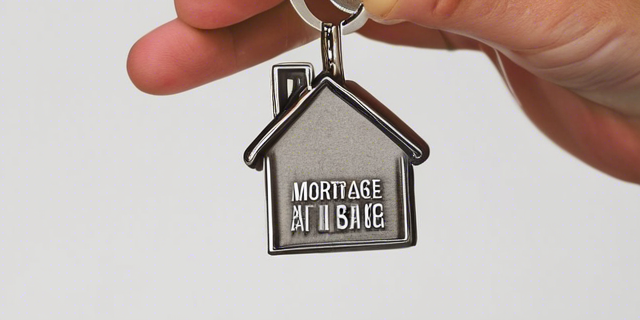How to Get Preapproved for a Mortgage 2024

Buying a home is one of the biggest financial decisions you’ll ever make, and getting preapproved for a mortgage is a crucial first step in the process. Preapproval not only gives you a better understanding of how much you can afford, but it also shows sellers that you’re a serious buyer. In this comprehensive guide, we’ll walk you through the steps to get preapproved for a mortgage, ensuring you’re well-prepared for your home-buying journey.
Why Preapproval is Important
Before we dive into the nitty-gritty of the preapproval process, let’s discuss why it’s so important. Getting preapproved for a mortgage has several benefits:
- Competitive Edge: In a hot housing market, being preapproved can give you a competitive edge over other buyers who haven’t taken this step. Sellers are more likely to consider offers from preapproved buyers, as it shows they’re financially qualified.
- Faster Closing: With preapproval, much of the paperwork and verification process is already completed, which can lead to a faster closing once you’ve found your dream home.
- Realistic Budget: Preapproval gives you a clear understanding of how much home you can realistically afford, preventing you from falling in love with properties that are outside of your price range.
Prequalification vs. Preapproval: What’s the Difference?

It’s important to understand the distinction between prequalification and preapproval. Prequalification is a simple, preliminary step where a lender evaluates your financial information based on what you provide, without verifying any of the details. Preapproval, on the other hand, involves a more in-depth review of your financial documents, credit history, and employment information.
Preapproval carries more weight than prequalification because it’s a formal commitment from the lender, indicating that you’re approved for a specific loan amount, assuming the information you provided is accurate.
Steps to Get Preapproved for a Mortgage
Now that you understand the importance of preapproval, let’s dive into the steps you’ll need to take to get preapproved for a mortgage.
1. Gather Your Financial Documents
The first step in getting preapproved is to gather all the necessary financial documents. Lenders will typically require the following:
- Proof of Income: This includes recent pay stubs, W-2 forms, and tax returns (usually the last two years).
- Proof of Assets: Bank statements, investment account statements, and any other documentation that shows your available funds for a down payment and closing costs.
- Proof of Employment: A recent employment verification letter or contact information for your employer.
- Credit Report: Lenders will pull your credit report to assess your creditworthiness.
- Identification: A valid government-issued ID, such as a driver’s license or passport.
Having these documents readily available will help streamline the preapproval process.
2. Check Your Credit Score
Your credit score plays a significant role in determining your eligibility for a mortgage and the interest rate you’ll receive. Lenders typically prefer a credit score of 620 or higher, but the higher your score, the better your chances of getting approved and securing a lower interest rate.
Before applying for preapproval, it’s a good idea to check your credit report and score from all three major credit bureaus (Experian, Equifax, and TransUnion). This will give you an opportunity to address any errors or discrepancies that could negatively impact your credit score.
You can get your credit reports for free once a year from AnnualCreditReport.com, a website authorized by federal law. If you find any errors, dispute them with the credit bureaus immediately.
3. Calculate Your Debt-to-Income Ratio
Lenders use your debt-to-income ratio (DTI) to evaluate your ability to manage the monthly mortgage payments on top of your existing debt obligations. To calculate your DTI, you’ll need to divide your total monthly debt payments (including credit card bills, student loans, car loans, etc.) by your gross monthly income.
For example, if your monthly debt payments total $2,000 and your gross monthly income is $6,000, your DTI would be 33% ($2,000 / $6,000 = 0.33).
Most lenders prefer a DTI of 43% or less for conventional loans, and 50% or less for FHA loans. If your DTI is higher, you may need to work on paying down some of your existing debt before applying for preapproval.
4. Shop Around for Lenders
Not all lenders are created equal, and shopping around can help you find the best mortgage rates and terms. Consider reaching out to multiple lenders, including banks, credit unions, and online lenders, to compare their offers.
When comparing lenders, pay attention to:
- Interest Rates: Compare the interest rates offered by each lender, as even a small difference can significantly impact the overall cost of your mortgage over the life of the loan.
- Fees: Lenders charge various fees, such as origination fees, application fees, and closing costs. Understanding these fees can help you make an informed decision.
- Customer Service: Read reviews and consider the lender’s reputation for customer service, as you’ll be working closely with them throughout the home-buying process.
Don’t hesitate to negotiate with lenders to secure the best possible terms.
5. Get Preapproved
Once you’ve gathered all the necessary documents and selected a lender, it’s time to formally apply for preapproval. This process typically involves the following steps:
- Completing a Mortgage Application: You’ll need to provide detailed information about your employment, income, assets, and liabilities.
- Submitting Documentation: The lender will require you to submit the financial documents you’ve gathered, such as pay stubs, tax returns, and bank statements.
- Credit Check: The lender will pull your credit report and credit score to assess your creditworthiness.
- Income and Asset Verification: The lender will verify your income and assets by contacting your employer and reviewing your bank statements.
After reviewing your information, the lender will issue a preapproval letter that outlines the loan amount you’re approved for, the interest rate, and other terms.
6. Understand the Preapproval Validity Period
It’s important to note that preapproval letters typically have an expiration date, usually ranging from 60 to 90 days. During this period, the lender has verified your financial information and is committed to providing you with the approved loan amount, assuming your circumstances don’t change.
If you don’t find a home within the validity period, you may need to go through the preapproval process again to ensure your information is up-to-date.
Tips for a Successful Preapproval

To increase your chances of a smooth preapproval process, consider the following tips:
- Avoid Major Financial Changes: Once you’ve started the preapproval process, it’s best to avoid making significant financial changes, such as changing jobs or taking on new debt, as these could impact your approval.
- Be Prepared to Explain Irregularities: If there are any irregularities or gaps in your financial history, be prepared to explain them to the lender. Providing documentation and a clear explanation can help alleviate any concerns.
- Consider a Co-Borrower: If your income or credit score is lower than desired, you may want to consider adding a co-borrower (such as a spouse or family member) to strengthen your application.
- Maintain Good Credit Habits: Even after preapproval, continue to practice good credit habits, such as paying bills on time and keeping credit card balances low.
Conclusion
Getting preapproved for a mortgage is a crucial step in the home-buying process, and it’s essential to understand the requirements and procedures involved. By following the steps outlined in this guide, you’ll be well on your way to securing a preapproval letter that puts you in a strong position to make an offer on your dream home.
Remember, preapproval is not a guarantee of a mortgage, but it does demonstrate your financial readiness to lenders and sellers. With a preapproval letter in hand, you can confidently navigate the housing market, knowing you’re prepared for the next exciting step in your homeownership journey.
FAQs: How to Get Preapproved for a Mortgage 2024
1. How long does the preapproval process typically take?
The preapproval process can take anywhere from a few days to a couple of weeks, depending on the lender and the completeness of your application. It’s essential to provide all the necessary documents and information upfront to expedite the process.
2. Does getting preapproved affect my credit score?
Getting preapproved for a mortgage typically involves a hard credit inquiry, which can temporarily cause a slight dip in your credit score. However, this impact is usually minor and temporary, especially if you’re actively shopping for a mortgage and comparing rates from multiple lenders within a short period (typically 14-45 days, depending on the scoring model used).
It’s worth noting that too many hard inquiries over an extended period can have a more significant negative impact on your credit score. Therefore, it’s advisable to limit your preapproval applications to only those lenders you’re seriously considering.
3. How much income and assets do I need for preapproval?
The income and asset requirements for preapproval vary depending on the lender and the loan program you’re applying for. Generally, lenders prefer a stable employment history and a debt-to-income ratio (DTI) below 43% for conventional loans and below 50% for FHA loans.
As for assets, you’ll typically need enough funds to cover the down payment (which can range from 3% to 20% or more, depending on the loan type) and closing costs (usually 2% to 5% of the home’s purchase price).
4. Can I get preapproved with a low credit score?
While a higher credit score (generally 680 or above) is preferred by most lenders, it is possible to get preapproved with a lower credit score. However, you may be required to provide additional documentation or put down a larger down payment.
If your credit score is below 620, you may have fewer loan options available, and you may need to explore alternative loan programs or work on improving your credit score before applying for preapproval.
5. Can I get preapproved by multiple lenders?
Yes, you can get preapproved by multiple lenders, and it’s often recommended to shop around and compare offers from different lenders. This practice, known as rate shopping, can help you secure the best possible interest rate and terms for your mortgage.
Just be sure to complete all your preapproval applications within a short period (usually 14-45 days) to minimize the impact on your credit score, as multiple hard inquiries within this timeframe are typically treated as a single inquiry by credit scoring models.
Remember, getting preapproved does not obligate you to work with a particular lender, so it’s wise to explore your options and choose the lender that best suits your needs and financial situation.

